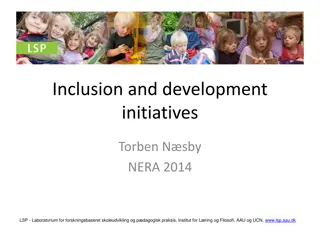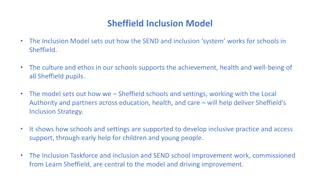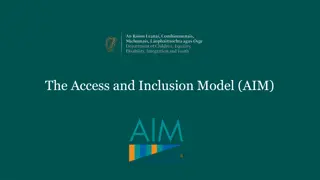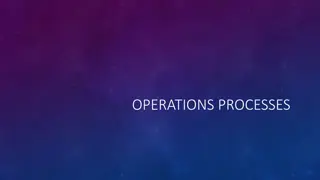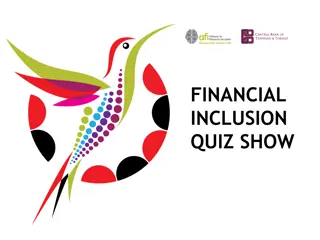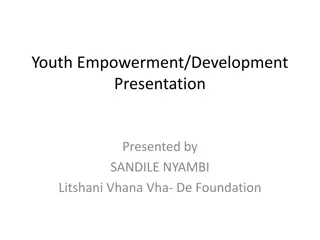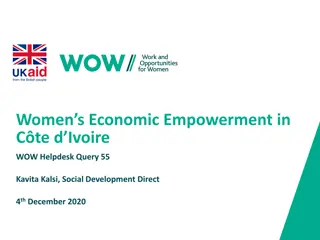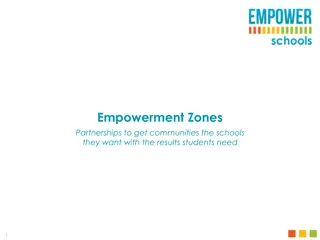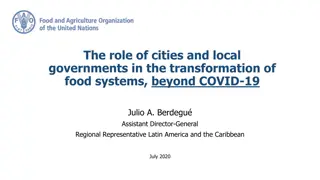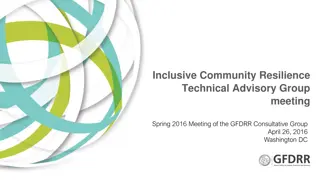Transforming Inclusion Through Local Empowerment
Embracing a new approach to inclusion, Tim Bowman emphasizes the need for targeted investments and local empowerment to meet the diverse needs of children and families. By reorganizing resources into localities, fostering inclusive practices, and collaborating with special schools, the vision is to create a more integrated and effective support system for all. This innovative model calls for a shift from intervention to prevention, incentivizing inclusion, and empowering communities to shape resource allocation and service provision.
Download Presentation

Please find below an Image/Link to download the presentation.
The content on the website is provided AS IS for your information and personal use only. It may not be sold, licensed, or shared on other websites without obtaining consent from the author. Download presentation by click this link. If you encounter any issues during the download, it is possible that the publisher has removed the file from their server.
E N D
Presentation Transcript
A new approach to inclusion Tim Bowman Head of Inclusion and Targeted Services
Background Vision for every child, young person and family to be safe and achieve their potential Significant minority have needs, disadvantages and vulnerabilities Despite successes and good practice, statistics are not generally positive for this minority (PA, exclusions) Pattern of need is changing (autism) and not matched by provision Funding system under pressure and not incentivising right behaviours Neither a centralised model nor a one size fits all approach can deliver for inclusion. City too big, challenges too varied and resources too much in demand
Meeting the challenge of inclusion requires us all to change how we work Targeting our investments in favour of inclusion no reduction in inclusion funding overall Changing the way we work - more local control and influence over resources, more choice for parents and families Establishing an integrated locality model comprising: Current Early Help and Support Services (MAST) A reorganised inclusion service with a reinvestment of resources into localities for early help / prevention Current SEND spend Targeted additional investment Through this change localities will have greater incentive to develop inclusive practices and more freedom to determine how resources are allocated and services commissioned
Locality Working Key aim to develop good inclusive practices through local sharing of expertise, resources and good practice Provide a team around an area Give localities freedom to determine how resources are allocated and services commissioned Special schools are vital to this model. We will work with special schools as a locality in their own right focused on working with young people with the most complex needs
Delivering this model requires all partners to change Inclusion support must be integrated and re-organised through localities Sheffield Inclusion Centre offer must be re-commissioned Processes around SEND funding must change and incentivise inclusion Funding and resources must be released from intervention to prevention MAST model must be integrated: ensuring consistent assessment, early help and whole family approaches are adopted
High Needs Funding: Draft Future Model: April 2016 Locality Based Model, supported by Special Schools Descriptors of Need and Provision Matrix supported by use of My Plan Parity across the system underpinned by strong accountability Funding follows the pupil/student
Decisions taken by the School Forum 1. That we should move to a localities based funding and delivery model from April 2016. 2. That Banded Funding ceases to exist with immediate effect and that schools in localities should work together to manage existing and new support needs within their current resources. The School Forum has also: 1. Commissioned the special school sector, IRs and Sheffield City Council to agree the package of outreach support to be provided to mainstream schools for the remainder of this year. 2. Asked the EP Service start working with schools to re-assess banded pupils against the Sheffield Support Grid. 3. Asked Sheffield City Council to: identify an amount of funding for each locality to support the costs of administrating this approach for the remainder of this financial year. Work with localities C and G to develop a SLA for use by all localities with their schools. 4. Reconstituted its Working Group to develop the detailed model for how funding will be allocated to localities from April 2016.
Next Steps (1) School leaders have so far been supportive on these policy proposals But have raised the following issues: Capacity Practical challenges of moving quickly Moderation and Equity Availability and quality of support The alignment of key initiatives (early help, inclusion, school improvement)
Next Steps (2) We (SCC) have already re-organised some of our workforce (SEN, EP) and are working with heads to overhaul behaviour support We are working with Learn Sheffield to design an integrated model in localities We need to learn from pilots that are underway We know that localities need resources ( s and people) to deliver this work


